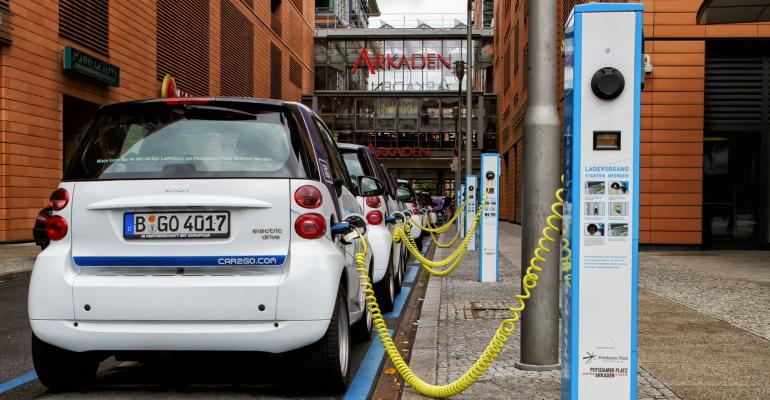Behavior-influencing policies are critical for mass-market success of low-carbon vehicles and in enticing consumers away from fossil fuels if transport-sector carbon emissions are to be significantly reduced, researchers say.
A European study takes a global look at the non-financial reasons why consumers choose vehicles, and at the long-term energy and carbon-emissions implications those choices may have.
Researchers David McCollum of the International Institute for Applied Systems Analysis and Charlie Wilson of the University of East Anglia, U.K., say a consumer will not look only at the upfront costs and running costs.
They also consider attributes such as available models and brands, comfort, acceleration, interior space and the availability of infrastructure such as refueling stations.
These still are lacking with most types of alternative-fuel vehicles, particularly electric and hydrogen vehicles, the researchers say, noting most consumers lack firsthand experience with these novel technologies.
The researchers used six global energy-economy models in the study, upgrading the tools so they would more adequately represent consumers’ behavior and preferences.
They modeled two different future scenarios for alternative-fuel vehicle (AFV) policy worldwide to 2050.
The AFV Push scenario imagines a future where policy and social incentives lead consumers to be less risk-averse, allowing low-carbon vehicles and their refueling and recharging infrastructure to become the norm.
In contrast, the No AFV scenario imagines current views of these vehicles persisting due to minimal policy support, low levels of consumer awareness and limited infrastructure.
The models show a mix of robust transport policies and strategies could increase AFVs’ market share to more than 25% of all cars and trucks by 2050, perhaps even higher. This would amount to 500 million such vehicles worldwide by midcentury.
Without any such policies, AFVs will remain a niche market, with a share hovering around 1% for the foreseeable future – hardly greater than today, the researchers say.
Behavior-influencing policies to encourage the use of AFVs include fuel taxes, vehicle subsidies, technology mandates, efficiency standards, investment in refueling infrastructure and dedicated parking spaces, as well as social-media campaigns and car-sharing networks to demonstrate the technology.
The study says the difference these policies can make, if applied in a multi-pronged strategy, already can be seen in countries that strongly support the use of AFVs, such as China, Iceland, Norway and Sweden. In Norway, 40% of passenger cars sold in 2017 were battery-electrics or plug-in hybrids.
Wilson says the research indicates that, when considering the wide range of non-financial attributes for which vehicle purchasers express preferences, AFVs will be a hard sell to many for some time to come.
“The good news is that this is where dedicated transport policies and measures can help – and in fact are already helping,” he says.
The researchers say focusing on the behavioral aspects of consumers in vehicle-purchase decisions is key to encouraging the rapid uptake of plug-in hybrid vehicles, battery-electric vehicles and hydrogen-fuel-cell vehicles.
They say making conventional gasoline and diesel vehicles more expensive to run through increased fuel or carbon taxes is not enough to encourage most consumers to change.
“AFVs will play a critical role in the effort to avoid dangerous climate change,” McCollum says, “but only if measures to stimulate their adoption in cities – with positive climate, air-quality and health outcomes – are combined with policies to drive fossil fuels out of the electricity mix in favor of renewables and other low-carbon resources.”





